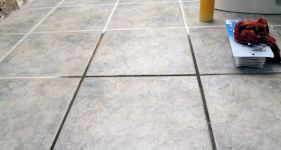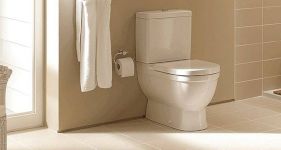Shower Installation Guide
This article will cover the installation of different showers, including the cost, how long it takes, and what Building Regulations need to be taken into account.
We will also look at the pros and cons of different shower installations, the kind of questions that you should ask a shower installer and the best ways to clean and maintain your shower.
We will calculate how much you can expect to pay a professional to fit a shower as well as the supply costs of different types of showers.
If you are unsure about the best shower for your bathroom or how best to fit it into your bathroom design, we will discuss electric showers, power showers and digital showers to help you decide.
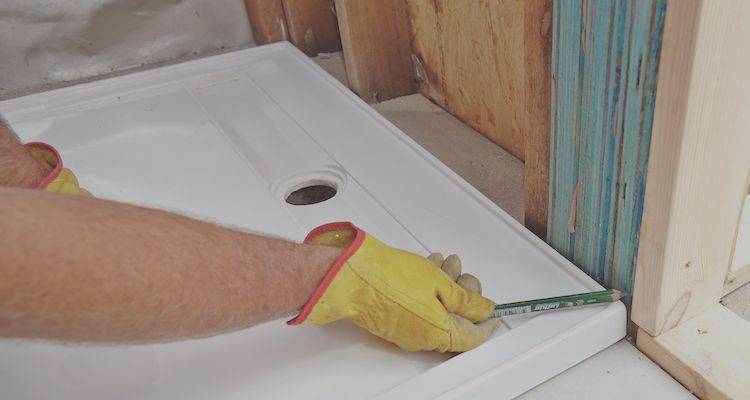
Table of Contents
- What is a Shower?
- Types of Shower
- What Are the Pros and Cons of a Shower?
- How Much Does It Cost to Install a New Shower?
- How to Install a Shower
- How Long Does It Take to Install a Shower?
- Building Regulations or Planning Permission Approval for Shower Installations
- How to Clean and Maintain a Shower
- Shower Repairs
- Questions to Ask When Hiring a Shower Installation Specialist
- FAQs
- Sources
What is a Shower?
Although the concept of showers has been around for thousands of years, the ability to have a hot shower in your own home only became possible in the 20th century. Previous to this, people mostly used bathtubs.
Showers became popular in the UK in the 1980s; although they were available and used before then, they were not as widely popular prior to this time. During the 80s, the variety and range of available showers made them more affordable and popular.
Most homes these days have a shower of one sort or another, whether it is an above-bath shower or in a separate cubicle. From the first electric showers to today’s digital showers, there is a wide range and variety of styles to choose from to provide a quick and efficient means of bathing.
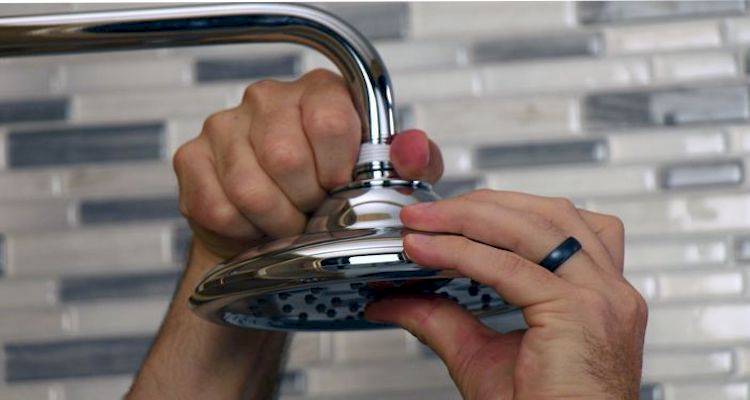
Types of Shower
There are many different types of showers available such as electric showers, mixer showers, power showers, steam showers or digital showers. The one you choose will depend on the needs of your household, your hot water system and even your water pressure.
Budget and personal choice will obviously also figure in the decision of which shower installation to go for.
Electric Shower
An electric shower contains an element that heats the water as it passes over it, much like an electric kettle and sends it to the shower head.
PROS
✔ It only requires a cold-water supply
✔ You only heat the amount of water needed for your shower
✔ Unlike some showers, it can be used if you have a combination boiler
CONS
✖ It relies on existing water pressure, although pumps can be fitted if you don’t have a combination boiler
✖ Electricity is a more expensive fuel
✖ Not as powerful as other types of shower
Mixer Shower
A mixer shower does exactly what its name suggests. It mixes hot water from your boiler with cold water normally via a thermostatic valve to control the temperature and delivers it to the shower head.
PROS
✔ Stronger flow rate than an electric shower
✔ They do not need a power source as they are purely mechanical
✔ Can be visible or concealed units
CONS
✖ Requires an existing hot water source
✖ For more than one shower, you may need to install a shower pump to maintain good water pressure
✖ Some models may not work with certain hot water systems or boilers
Power Shower
A power shower can be seen as a combination of the previous two types of shower. While they require electricity to power the pump, they do not heat the water but rely on an existing hot water source.
PROS
✔ Ideal for homes with low water pressure
✔ Cheaper than installing a mixer shower with a pump
✔ Most come with thermostatic valves and water-saving features
CONS
✖ You will still need a large enough supply of hot water for your requirements
✖ It cannot be used in conjunction with a combination boiler
✖ It uses more water than a standard electric shower
Digital Shower
Digital showers are the next generation that allows full use of the kind of technology we employ every day in our homes.
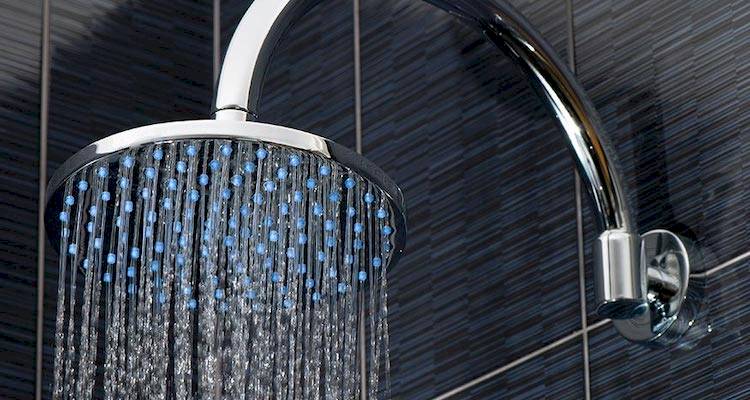
A digital shower uses a digital thermostat for more precise and accurate control of temperature and flow rate.
PROS
✔ Controls can be sited outside the shower and with voice commands
✔ Each member of the household can have their own bespoke setting
✔ Different types to suit most water systems
CONS
✖ You still need an existing source of hot water
✖ More expensive than an electric or power shower
✖ Digital showers on their own do not improve water pressure, unlike a power shower
Steam Shower
Steam showers are more mini spa than shower with a cabin which is filled with water vapour via a generator. They are also typically fitted with body jets, a large overhead shower head, LED lighting and Bluetooth connectivity.
PROS
✔ It offers all the benefits of a sauna or steam room, usually only available at the gym or spa
✔ It also serves as a large shower, often with body jets
✔ Many health benefits such as clearing airways and deep skin cleansing
CONS
✖ Quite expensive
✖ Not everyone needs a mini spa in their bathroom
✖ It cannot be used with a gravity-fed system
What Are the Pros and Cons of a Shower?
As with many things in life that are just part of our day, we tend to take a shower for granted and never really give it much thought, it’s just there. However, it is worth taking the time to consider the advantages and disadvantages of having a shower in your home.
Pros of a Shower
A shower is a quick and convenient way of bathing, with most people able to have a full shower in the time it takes a bathtub to fill.
It saves water with an average 5-minute shower using 55-60 litres of water, while a bath typically holds around 80 litres.
A shower may take up less floor space than a bath unless you have a large walk-in shower. However, most shower cubicles fit neatly in the corner of a bathroom.
It is suitable for people with limited mobility instead of climbing in and out of a bath, which can be inherently dangerous or impossible for some people. The cost of walk-in shower installations for those with limited mobility is far outweighed by the independence and dignity they offer.
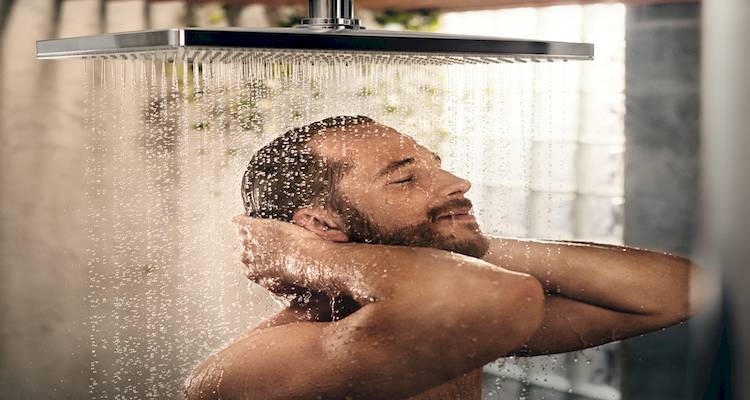
Showers are safer for children and the elderly. While young children should never be left alone in the bathroom, they are not at risk of drowning in a shower. An elderly person can easily slip and fall getting into or out of a bath. They could also be at risk of scalding if the temperature of a bath has not been accurately monitored.
A shower is more suited to a busy lifestyle than a bath. The water for showering is instantly available, you don’t need to wait for it to fill up, and of course, you can wash your hair at the same time.
Cons of a Shower
Most people agree that taking a shower is certainly a quick and convenient way of bathing, however, it is not as relaxing as taking a bath.
While actually taking a shower may be quicker than taking a bath, a shower does require more cleaning. Glass shower panels and cubicles need to be cleaned with a squeegee after each shower, or you risk having water stains and mildew growth.
The cost of walk-in shower installations will be much more than fitting a bath with an average price of around £1,000 compared to an average cost of around £650 for a bath.
How Much Does It Cost to Install a New Shower?
If you have decided to install a new shower, you will want to set a budget for the shower installation cost as well as have an idea of the price you are likely to pay a professional to fit it.
You will need to decide what type of shower you want, for example, an electric shower, power shower, digital shower etc. The water pressure will mostly dictate this decision in your home and what type of hot water system you have.
You may also want to remove an old shower and replace it with a newer model. You may also want to consider the cost of walk-in shower installations if you want to future proof your bathroom for a time when you may be less mobile.
Of course, the price you pay for your shower installation will depend on the type of shower you are fitting, the size and complexity of the installation, and where you live. Prices for plumbers and electricians in London are much higher than in other parts of the UK.
Electric Shower Cost
An electric shower does the job of heating the water as well as delivering it to the showerhead. It does this through a heating element which is an integral part of an electric shower and works on much the same principle as a kettle. For this reason, they can be used in most homes regardless of what hot water system you have.
An average electric shower cost is around £200-£250 for a good mid-range model. An electric shower must be installed by a Part P certified plumber or an electrician. The price charged by a qualified tradesperson to fit your shower will depend on the area that you live in.
An electrician will charge on average £40-£60 per hour in London, while a plumber will charge almost twice that amount. In other parts of the UK, the installation costs will be slightly cheaper with an electrician charging between £30-£60 per hour and a plumber £30-£70.
Cost to Install a Power Shower
A power shower installation has the added bonus of a pump which increases the flow rate of the water coming from the shower. It works on the same principle as a mixer shower, where it draws the hot and cold water directly from the source and then increases the water pressure with the power of the pump.
This is particularly beneficial for those with low water pressure coming into their homes. The average cost of a power shower installation is around £500, although this will depend on the make, model, and where you live in the UK.
As the pump for the shower will need to be wired in, you should hire a Part P certified plumber or electrician to install the shower. Tradespeople costs will be the same for the installation of an electric shower.
Cost to Install a Digital Shower
Digital showers use precise thermostats to accurately control the temperature and flow rate of the shower. Despite the high technology they employ, they are relatively straightforward to install. As most of the control is done wirelessly and through a Bluetooth connection, the physical wiring is minimal.
The average cost of a digital shower is between £900-£1,600, with variations depending on the make and specific models. As there is not a lot of wiring required, a plumber can easily fit a digital shower in your home. In fact, it is one of the few showers that you could install as a DIY task reducing the overall cost.
A plumber will cost around £30-£70 per hour in most parts of the country, but this price will rise in London to approximately £100-£135 per hour. However, most plumbers will quote a price for the whole job.
Cost to Install a Mixer Shower
A mixer shower takes the hot water from your boiler and cold water from the mains and mixes them together at a regulated temperature before delivering it to the showerhead. Mixer showers come in various designs and styles and can either be concealed in the wall or surface mounted.
Mixer showers are available from around £50-£600 as there is such a large range to choose from and it depends on how much you want to spend. You can have a very basic mixer or a smart technology model, it depends on your personal choice and budget.
The cost for a plumber to fit a mixer shower will be between £30-£70 an hour for most of the country or between £100-£130 per hour if you live in London.
Cost to Install a Steam Shower
A steam shower is probably the most luxurious and definitely the most expensive shower that you can fit in your home. It consists of a shower cabin with a steam generator as well as showerheads and body jets. It’s like having a mini spa in your house.
While they are not cheap, you do get a lot for your money. Most steam showers come with a steam generator, a fixed rainfall showerhead, a handheld showerhead, LED lighting, and Bluetooth connectivity for music.
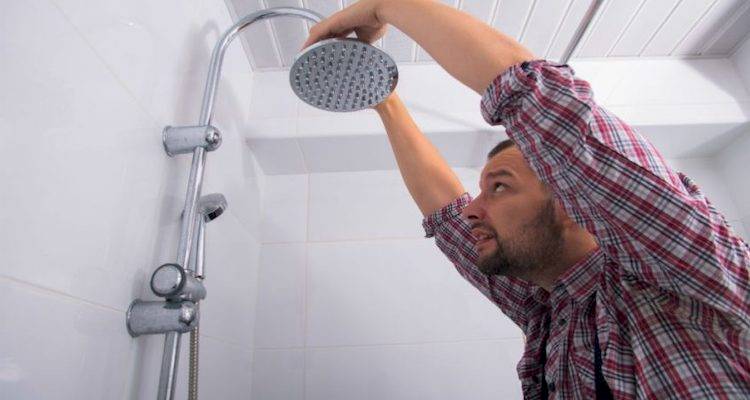
The price you pay for installation will depend on where you live, but the average cost of a plumber is between £30-£130 per hour, depending on your location.
The average price can be between £1,500-£6,000, depending on the make, model, and features of your new steam shower. However, due to the amount of electrics associated with a steam shower, you will need a Part P certified plumber to fit it safely.
Additional Jobs
Of course, the cost of installing a shower is most likely not the only outlay you will make, especially if you want to remove and replace your entire bathroom suite.
Re-tiling a Shower Enclosure
If you are going to the expense of a new shower, you may want to re-tile your shower enclosure. Of course, the cost will depend on the size of the space, the tiles you use and your location but on average, this job should cost around £250.
Installing a New Boiler
It may be that your choice of new shower will not work with your existing boiler, and if your boiler is more than ten years old, it is probably due to be replaced. Installing a new shower may be the perfect time to also replace your boiler.
The cost to install a new boiler is approximately £2,000, but prices will vary according to make, model and where you live in the UK.
Fitting a New Extractor Fan
Of course, not all your additional work may be as expensive as installing a new boiler. Fitting a new extractor fan is a fairly small job but with big advantages.
Controlling the warm air in your bathroom will keep it free of condensation and mildew growth. The average cost of installing a bathroom extractor fan is around £300.
Installing a New Shower Tray
You may want to replace your shower tray at some point. Depending on your current style, such as a raised shower tray installation or sunken tray, a new shower tray will cost between £120-£450. There are many different materials to choose from, including plastic, ceramic, and stone resin.
How to Install a Shower
As well as needing to know the shower installation cost you will need to understand the process of installing a shower.
This doesn’t mean that you need to do it as a DIY project but knowing the process will help you gauge the time it may take and the potential disruption to family life while the work is being done. This guide assumes that there is no need to lay wiring and no old shower to remove.
Installation Process
We will look at an exposed shower mixer installation. Bear in mind that other types of showers require different installation methods. Instructions in shower mixer installation guides should always be followed.
- The first step is to locate the nearest hot and cold water pipes. They can be identified by alternately running a hot or cold tap and feeling the pipe to see if it gets hot or cold.
- Once established, it is necessary to isolate the supply by closing the stopcock, usually located underneath the kitchen sink, and then running the hot and cold taps to drain the remaining water from the pipes.
- The pipes for the shower can be run from a tee joint, ensuring that you are connecting the right supply to the correct side of the mixer. A shut off valve for the hot and cold water supply can be installed close to the shower for ease of maintenance.
- Before connecting the mixer valve, it is advisable to flush the pipework to ensure no debris left that could potentially damage the new mixer shower and check for leaks. To do this, put stop ends on the pipes and open the stopcock again. Have a bucket or bowl handy and remove the stop ends from the pipes. Once any debris has been flushed out, the stopcock can be closed again.
- The mixer valve is held against the wall and the amount of outlet pipe measured in order for the mixer valve to fit flush to the wall.
- Drill holes for the fixings can be marked and drilled out. A diamond-tipped drill bit may be necessary if drilling into tiles.
- Collapsible olives are inserted into each outlet valve and tightened with a retaining nut.
- The mixer valve is then aligned with the supply pipes and inserted fully onto the inlet pipes.
- The shower valve should then be fastened to the wall, and the retaining nuts fully tightened with an adjustable spanner.
- The stopcock can be turned back on, and checks made for any leaks.
- Depending on whether the mixer shower comes with a flexible hose and bracket or a riser rail, these can now be fitted. A riser rail may need to be cut to size to fit to suit the ceiling height.
DIY Installation
A shower mixer installation is relatively straightforward for a confident DIY enthusiast. As long as the shower mixer installation guide instructions are followed properly, there should be no problems.
For other types of showers, it may be prudent to hire a professional. For example, a power shower installation involves wiring in a pump, so this is something that only a qualified electrician or Part P certified plumber should be undertaking. Similarly, an electric shower should only be fitted by a qualified professional.
Digital showers are quite DIY friendly as the controls are wireless and use Bluetooth connections. So, if you are confident in your plumbing skills, this is potentially a shower that you could fit yourself.
Advantages & Risks of DIY Installation
If you want to save some money on the cost of installing a shower, then you could fit one yourself. However, you should aim for a DIY-friendly shower such as a mixer shower or digital shower.
Anything that involves electrics will need to be professionally fitted. The risk to you while fitting an electric shower or to the people using it after installation is not worth the money you may save.

There is not just a risk from electric showers, any shower that is incorrectly fitted can potentially cause problems. Leaks and the resulting damage can be very costly, so it is important that if you are carrying out a DIY shower installation, you are confident of what you are doing, follow the instructions closely, and double-check all connections.
You could save some money by installing your own shower tray and leaving the plumbing and electrics to the professionals. Or you could fit your own shower panels. If you want to know how to fit a shower or how to fit a shower tray, there are plenty of online sources that give good tutorial videos or step by step instructions.
How Long Does It Take to Install a Shower?
The time it takes to install a shower will vary according to the different types of shower, the extent of the installation and whether you need to lay additional pipework or wiring to accommodate it.
Power Shower Installation
A power shower installation should take no more than a day if it is being done from scratch or is a replacement for a different type of shower. If you are swapping one power shower for another and all the necessary wiring and pipework is already in place, this would only take a couple of hours.
Electric Shower Installation
The timeframe for fitting an electric shower is approximately a day if it is necessary to lay new wiring. As an electric shower only requires a cold water supply, the plumbing part of the installation is quite straightforward, but time should be taken with the wiring to ensure the shower works properly and that it is safe.
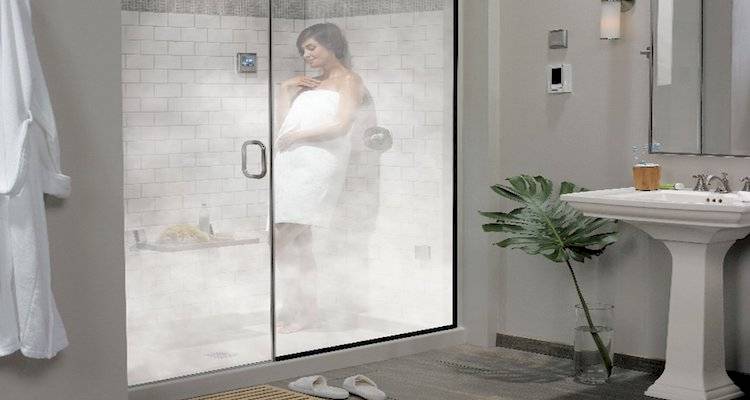
Digital Shower Installation
A digital shower installation can usually be done in 4-6 hours, depending on the type of shower being fitted. A dual outlet shower will take a bit longer than a single outlet, and a high-pressure system may need longer for commissioning. The longest part of a digital shower installation will be the pipework, as the controls are relatively straightforward to fix in place.
Steam Shower Installation
A steam shower consists of a cubicle with all the required connections already in place. They require assembly on-site, and this can take 2-4 hours. This does not include the time for the plumbing or wiring, which could take another 2-4 hours, depending on the individual project. The entire installation may take a day and a half to two days.
Unless you already have one in place, you may need to allow time for a shower tray installation.
Building Regulations or Planning Permission Approval for Shower Installations
When you carry out any work on your property, you should always ensure that you are complying with any Building Regulations that may apply. You should also check the Planning Portal to see if any planning permission may be required.
Building Regulations for Installing a New Shower
The installation of a completely new circuit connected to the consumer unit or alteration work in or around a bath or shower is considered notifiable works.
It must be carried out by or signed off by a qualified professional who can certify compliance. Details are available in Approved Document P of the Building Regulations.
If you are unsure, you can contact the building control department of your local authority and ask for guidance.
Planning Permission for Installing a New Shower
You will normally not need planning permission to install a new shower unless the property you own is a listed building. In this case, you will need to contact your local authority or find out more about listed building consent on the Planning Portal.
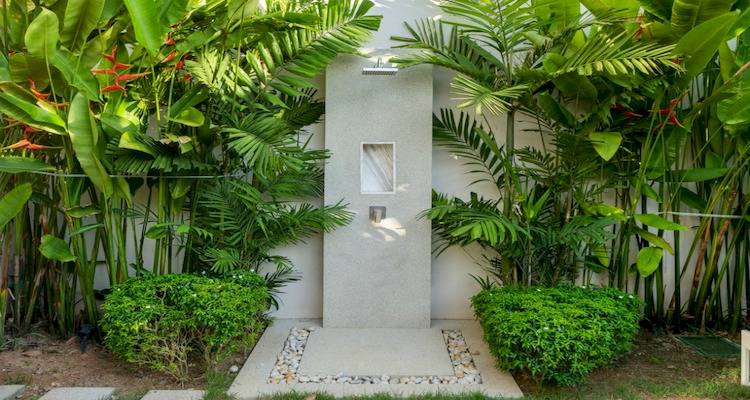
If you do need to apply for planning permission, the fee is approximately £200.
How to Clean and Maintain a Shower
You will want to keep your shower in the best possible condition to protect your investment and ensure that you can use it effectively for as long as possible. To do this, you need to have a good cleaning and maintenance routine.
Cleaning
To keep your shower in good condition, it is good to remove excess water on the shower surfaces with a squeegee every time you use the shower. This reduces the build-up of watermarks and limescale on the shower panels or tiles.
Weekly cleaning with an appropriate product is also recommended. If there is a build-up of limescale, you can buy a specialist limescale remover.
Regular cleaning of your shower will keep it in good working order, resist the growth of mildew and black mould in the silicone around the shower tray and ensure your bathing experience is pleasant.
Showerheads can be de-scaled with strong chemical descalers or less toxic solutions such as vinegar or lemon juice.
The best way to clean your shower is regularly with an appropriate and recommended cleaning agent or solution.
Maintenance
Maintenance of your shower should include regular cleaning, adequate ventilation, and fixing any issues with the shower or shower tray as soon as they arise.
The cost of installing a shower is not cheap, and to ensure that you get a good return on your investment, a regular maintenance schedule for your shower is recommended.

Shower tray installations typically involve sealing with a silicone sealant. Many people do not realise that this product has a finite life and at some point will need to be replaced. It is particularly vulnerable to mildew and black mould and does not always respond to cleaning.
It can also degenerate over time, and the waterproof seal will be lost. This can have serious consequences, as if water gets behind the tiles in your shower, they will start to de-bond, and you may have to remove them and re-tile the entire shower cubicle.
Shower Repairs
As with any household appliance, there is always the possibility of faults developing with your shower and the need for repair arising.
Lack of Hot Water
If you have no hot water or only lukewarm water from an electric shower, there may be an issue with the heating element, or the safety cut out. When the shower unit gets too hot, the safety cut out will activate to prevent scalding. To fix this, you will need an electrician.
The price of the repair will depend on the area that you live in and the price of the replacement part but on average may cost between £50-£100.
Leaks
Leaks in a shower can come from many places the pressure relief valve, inlet pipe or the door seal. If you have a leak from the bottom of the shower unit can be due to the pressure relief valve. This is activated when the pressure in the hot water tank builds up, usually due to a blockage and releases the water pressure through the valve.
An inlet pipe leak may require the connections to be replaced or the entire pipe depending on the extent of the problem.
If there is water escaping from the shower cubicle via the door, then there may be a broken seal on the door. For water leaking through an over the bath shower screen, it may have been fitted incorrectly. Once you establish where the water is escaping, you should be able to identify and rectify the problem.
Depending on where the leak is coming from and what type of shower you have, you may need to call a regular plumber or a Part P certified plumber who can work with electrics. This can cost you between £30-£130 per hour depending on where you live, with the more expensive hourly costs being in London.
No Water
If there is no water coming out of your shower, you may have a supply issue from the mains, so first, check that there is water coming into the property by turning on a tap. When you have ruled out a mains issue, you can consider the problem with the shower.
In an electric shower, a lack of water supply to the showerhead may be a faulty solenoid coil which will prevent the solenoid valve from opening and thus prevent water from reaching the showerhead. This can be replaced at a cost of between £10-£50 depending on the brand.
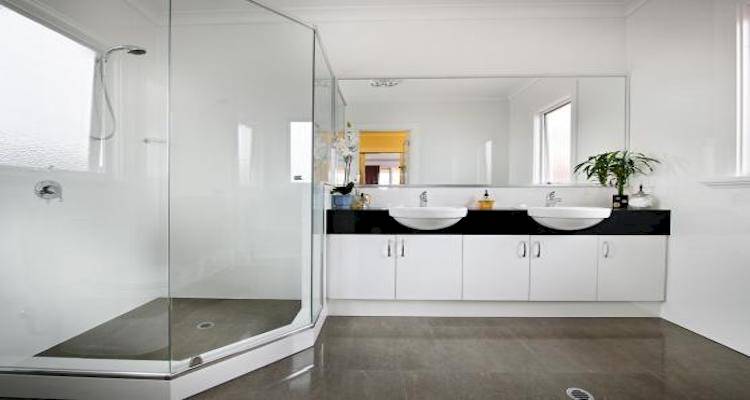
Of course, no water reaching your shower could mean that there is a leak that may not be immediately apparent. If the shower is upstairs and there is a leak, the ceiling below will be the first place that the water will appear as a stain.
Shower Tray Issues
A shower tray is an integral part of your shower, and damage or faults can lead to leaks onto your bathroom floor or behind your tiling. Some raised shower tray installations are flexible and may not be installed or sealed properly, allowing movement and water ingress. The best solution is to remove the tray and either re-install it securely or install a rigid shower tray.
Raised shower tray installations are either fitted on a timber frame or adjustable legs. If not installed level and solid, they are prone to movement and cracking of the silicone sealant.
Scratches and cracks to ceramic, stone, acrylic and plastic shower trays can be mended by specialists with results that are almost invisible. Although you can buy repair kits for shower trays for between £20-£45, it is best to hire a qualified specialist to ensure a seamless repair.
Questions to Ask When Hiring a Shower Installation Specialist
When you need to hire someone to install your shower, you should ask a few questions before you decide who to choose.
Qualifications
Most plumbers will be qualified to install a mixer shower that doesn’t require any electrical installation. However, it is important that any shower that requires wiring is installed by a Part P plumber or a qualified electrician. Enquire about a potential contractor’s qualifications and ask for proof.
Experience
As well as being qualified to do the job, you will want to know that the installer has experience in fitting a shower similar to yours. If someone only has general plumbing experience, they may not be experienced in fitting a power shower or electric shower. Specific experience is important as you will want it to be done properly and for your shower to work effectively.
References
Always ask for references. Most professional tradespeople and contractors expect and understand this and will be ready and willing to provide them. If you are getting a recommendation from family, friends, or neighbours, you may also have the opportunity to view a shower installers work first hand and discuss how the work was done.
Insurance
All contractors and tradespeople working in your home should have appropriate and adequate insurance. The most common insurance will be public liability insurance, and you should ask for proof of this before allowing any work to be done in your home. Public liability insurance protects against injury or damage caused by the contractor or his work.
FAQs
Which shower is the best?
In other words, the best shower will be different for everyone according to their situation. However, you should always buy from a reputable brand and ensure you receive a guarantee with your purchase.
How do you clean a shower tray?
For limescale, add lemon juice and baking soda to heated white vinegar to make a paste which is applied to the limescale and rinsed off after an hour, taking the limescale with it.
Is it advisable to seal around an electric shower?
What is the best type of shower tray?
Why can I not have a power shower if I have a combination boiler?
This is because a power shower has a built-in pump that needs to be fitted between the hot water cylinder and the showerhead. A combination boiler takes cold water straight from the mains, heats it and sends it to the shower. There is no hot water cylinder with this system for the power shower to be fitted to.
Sources
https://www.plumbworld.co.uk/blog/what-are-the-different-types-of-shower
https://steamshowerstore.co.uk/steam-showers
https://www.bigbathroomshop.co.uk/info/blog/how-to-install-a-thermostatic-mixer-shower/
https://www.planningportal.co.uk/info/200126/applications/60/consent_types/7
https://www.mirashowers.co.uk/professional-zone/news/faq-feature-electric-showers/
https://versital.co.uk/shower-trays/how-to-choose-the-correct-shower-tray-stone-resin-shower-trays
https://www.viessmann.co.uk/heating-advice/how-to-increase-water-pressure-in-a-shower

